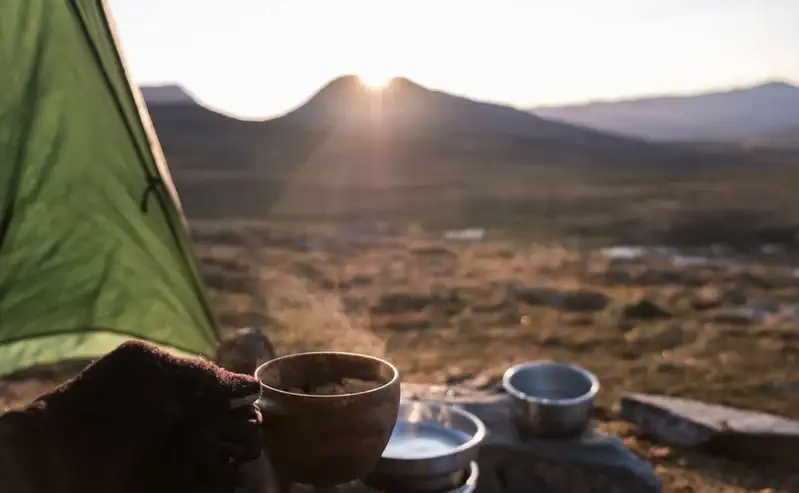The question in the title is reasonable, but the reality is that you will be forced to cook in a tent and you will use butane or propane. So read here more about this.
Using a gas stove in a tent may not be advisable but it is practically unavoidable. Most of advises that you can find around are usually detached from reality.
I was puzzled with what people write about cooking in the tent. As an example, in a source I find the question ‘Why can’t I use my camping stove in my tent?’, and they provide an answer that reads:

I have addressed a lot related to this in my separate text entitled Butane or Propane for Cold Weather Camping, so I shall try to avoid repeating things here.

It is not only about butane
The question in the title is about butane, but the same holds for propane. These two gasses are commonly used for camping.
So indeed, it may not be advisable to use a butane or propane stove inside a tent, but the reality us that you will be forced to do this.
- If you are in a situation where it is raining for hours, you cannot cook outside. Those who insist on cooking outside have probably never been in such an environment. I have, and I have cooked inside many times, both in the car and in the tent, and I feel I am not dead yet.
- If it is also windy and cold outside, cooking will be slow, and you will be freezing. So you have to stay inside.
Are tents really flammable?
You will read about a “huge risk” if you cook in the tent. But I have never seen a tent destroyed by fire. Have you? And I do know that people cook in tents.
In fact, most of the tents on the market are not flammable. There are obvious good sides of it, so the statement in the screenshot above is not necessarily correct.
There are videos around showing some attempts to burn tents, and without success. Have a look here if you do not believe:
But there is a downside of this. Camping tents should meet the CPAI-84 standards but this is a voluntary specification for most countries. Now, the problem is in what manufacturers do to meet standards. There is lots of chemicals used in the process, and when you see the list it may look frightening.
There are manufacturers who claim that their flame-retardant tents are without such chemicals. Fjällräven is one of them, you can see more in their text about sustainable materials.
How about carbon monoxide poisoning?
In my mentioned text Butane or Propane for Cold Weather Camping there are a few formulas showing what happens in the process of gas burning.
So indeed there may be CO produced in the process, and it is advisable to keep the tent ventilated when you cook inside.
On the other hand, how many times have you heard about people died in tents due to CO-poisoning?
Carbon monoxide poisoning symptoms
From what I can find around, the symptoms are the following:
- Headache.
- Short of breath.
- Dizziness or nausea.
- Feeling tired.
- Disorientation.
- Stomach pains.
Now, have you have experienced altitude sickness? If so, then you recognize several of its symptoms in the list above. So it is easy to mix things and think that you have CO poisoning while in fact this is simply an elevation issue.
How much CO is too much?
From a reputable source, I see that the U.S. Occupational Health and Safety limit for healthy workers is 50 ppm. High concentrations of CO kills in less than five minutes.
A concentration of 400 ppm will cause headaches in 1 to 2 hours. This same level of CO can cause death in 3 to 5 hours. Carbon monoxide detectors are designed to sound an alarm when concentrations are greater than 100 ppm.
Low concentrations will require a longer period of time to affect the body. Cooking in a tent is surely not a prolonged activity.
Conclusion
In summary, cooking in the tent may not be advisable, but the reality is that it is hardly avoidable.
Modern tents will not burn easily, if at all, and carbon monoxide issue is not really a big deal if you apply a simple logic and measures. CO is more or less the same weight as the rest of the air, therefore with ventilation it will go away.
But if you are so much concerned about CO in the tent, there are small and portable tent carbon monoxide detectors, so play safe and have one with you.
Thank you for reading. Let me know if you disagree with what I say here in the text, there is a comment box below.
Leave a Reply